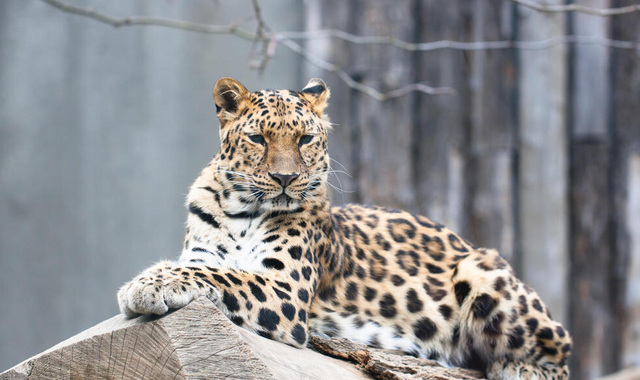STATUS Critically Endangered
POPULATION More than 84 individuals
SCIENTIFIC NAME Panthera pardus orientalis
WEIGHT 70 -105 pounds
HABITATS Temperate, Broadleaf, and Mixed Forests

Leopards are commonly associated with African savannas, but in the Russian Far East, an unique subspecies has adapted to living in the temperate woods that make up the species' northernmost territory. The Amur leopard, like other leopards, can reach speeds of up to 37 miles per hour. This amazing creature has been seen to leap over 19 feet horizontally and up to 10 feet vertically.
The Amur leopard lives alone. It is agile and strong, and it carries and hides unfinished kills to avoid being eaten by other predators. Some males have been known to stay with females after mating and even assist with child rearing. Several males may pursue and battle for a female. They live for 10-15 years in the wild and up to 20 years in captivity. The Far East leopard, Manchurian leopard, and Korean leopard are all names for the Amur leopard.
WHY THEY MATTER
The Amur leopard is environmentally, commercially, and culturally significant. Other species, such as Amur tigers and prey species like deer, benefit from its habitat conservation. We can bring them back and assure the region's long-term conservation with the correct conservation initiatives.
THREATS
ILLEGAL WILDLIFE TRADE
The Amur leopard is mostly hunted for its stunning spotted fur. In the Russian settlement of Barabash, not far from the Kedrovaya Pad reserve, an undercover investigation team discovered a female and a male Amur leopard skin being sold for $500 and $1,000, respectively, in 1999. The leopards' habitat is surrounded by agriculture and communities. As a result, poaching is a problem—not only for leopards, but also for essential prey species like roe deer, sika deer, and hare, which are killed by people for food and money.
PREY SCARCITY
Across the Amur in Russia and China, significant swaths of appropriate habitat remain. The prey base in China is insufficient to support substantial leopard and tiger populations. Prey populations will rebound if measures are made to reduce prey poaching and forests are managed more sustainably for logging. The Amur leopard must repopulate its old range in order to live in the long run. However, first and foremost, prey populations must rebound.
“Amur leopards are teetering on the brink of extinction. With the establishment of the Land of the Leopard National Park, in conjunction with other conservation efforts, we can now start to focus on how to begin bringing them back.”
Dr. Sybille Klenzendorf
Managing Director, Species Conservation